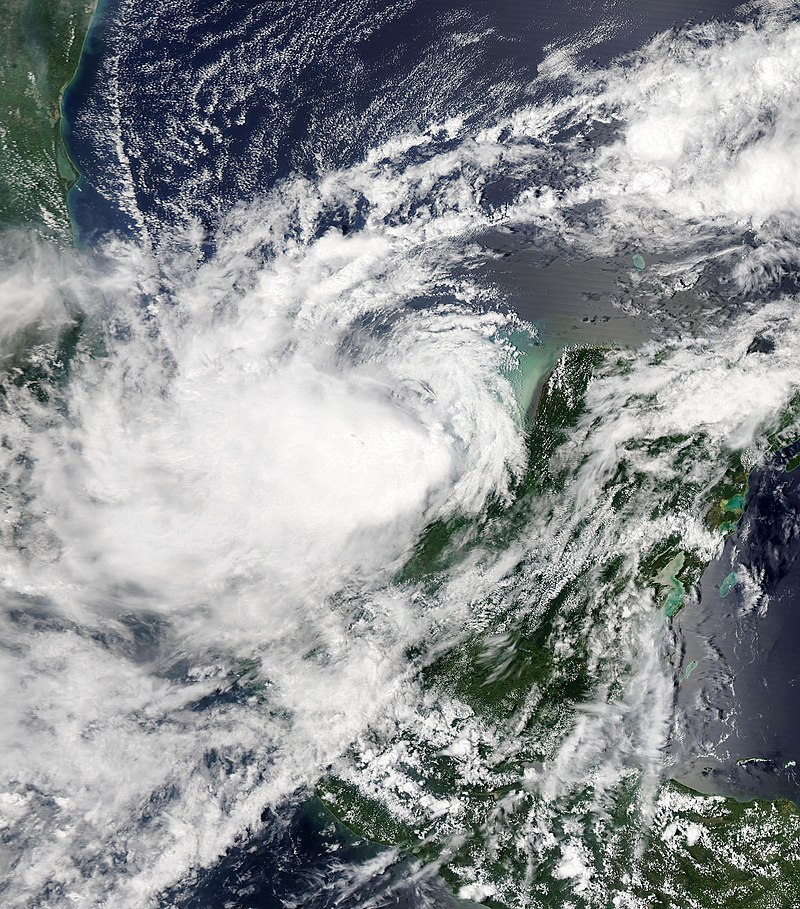This research article focuses on Hurricane Nate, a tropical cyclone that caused minor damage in southeastern Mexico during mid-September 2011. Despite its relatively weak intensity, Nate left a notable impact on the affected regions, highlighting the importance of preparedness and protective measures for communities facing similar hurricane threats. This article provides a comprehensive analysis of Nate’s formation, track, effects, and the subsequent measures taken to recover and rebuild the affected areas.
Introduction: Hurricane Nate emerged as the fourteenth named storm and fourth hurricane of the 2011 Atlantic hurricane season. Originating from a frontal trough in the Bay of Campeche on September 7, Nate exhibited slow movement and gradually intensified while navigating a weak steering environment. Although officially classified as a tropical storm, a post-season review revealed that Nate briefly reached Category 1 hurricane status on the Saffir-Simpson hurricane wind scale on September 8. However, due to its leisurely pace, the storm induced significant upwelling, causing a decline in convective activity and subsequent weakening.
Impact on Southeastern Mexico: On September 11, Hurricane Nate made landfall along the coast of Mexico as a tropical storm. The affected areas experienced substantial rainfall, resulting in several inches of precipitation. The storm’s relatively low intensity spared the region from widespread devastation, but it did cause damage to several hundred structures. Additionally, Nate’s impact resulted in unfortunate human losses. Ten oil rig workers went missing during the storm, with seven eventually being rescued. Regrettably, one worker lost their life due to unknown causes, and three other bodies were later recovered. Tragically, in Veracruz, a young boy was fatally struck by lightning during the storm.
Recovery and Rebuilding Efforts: Following Hurricane Nate’s passage, the affected regions embarked on the process of recovery and rebuilding. Local authorities and emergency management agencies collaborated to assess the damage, provide assistance to the affected population, and restore critical infrastructure. The cleanup operation involved clearing debris, repairing damaged structures, and restoring essential services such as power and water supply. The cost of cleaning and rebuilding the affected areas reached several million dollars, emphasizing the economic impact of even relatively minor hurricanes.
Preparedness for Future Hurricanes: To be better protected against future hurricanes similar to Nate, communities in at-risk areas can implement various preparedness measures. These include: a) Developing robust emergency response plans and ensuring efficient communication channels between authorities and residents. b) Educating the public about hurricane preparedness, including evacuation routes, storm shelters, and the importance of securing property. c) Enhancing early warning systems and meteorological forecasting capabilities to provide timely and accurate information to residents. d) Strengthening building codes and regulations to ensure structures can withstand hurricane-force winds and flooding. e) Establishing community resilience programs to promote social cohesion, disaster awareness, and self-sufficiency during emergencies.
Interesting Fact: As a direct result of Hurricane Nate in 2011, meteorologists and researchers gained valuable insights into the impact of slow-moving storms and upwelling. Nate’s prolonged stay over the Bay of Campeche induced significant upwelling, which cooled the sea surface temperatures. This phenomenon led to decreased convective activity, limiting the storm’s intensity. The study of such interactions between tropical cyclones and oceanic processes has since contributed to improved hurricane forecasting and understanding of hurricane behavior.
In conclusion, Hurricane Nate, despite its minor damage, serves as a reminder of the potential risks and impacts associated with tropical cyclones. This case study underscores the importance of preparedness, community resilience, and effective response strategies in mitigating the effects of hurricanes. By implementing proactive measures and learning from past experiences, communities can enhance their ability to protect lives, minimize damage, and foster faster recovery in the face of future hurricane threats.




Leave a Reply